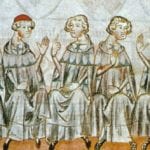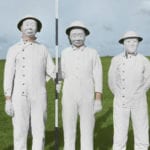 Movies and TV
Movies and TV  Movies and TV
Movies and TV  History
History 10 Things You Never Knew About Presidential First Ladies
 Movies and TV
Movies and TV 10 Zombie Movies That Will Actually Terrify You
 Humans
Humans 10 Times Scientists Were Absolutely Sure… and Absolutely Wrong
 Our World
Our World 10 Pivotal Moments for Life on Earth
 Movies and TV
Movies and TV 10 Most Realistic Medical TV Shows of All Time
 Creepy
Creepy 10 Eerie & Mysterious Ghosts of the Pacific Coast
 Weird Stuff
Weird Stuff 10 Typos That Accidentally Changed History
 History
History 10 Times Trickery Won Battles
 Technology
Technology 10 Awesome Upgrades to Common Household Items
 Movies and TV
Movies and TV 10 Movie Flops That Found Their Way to Cult Classic Status
 History
History 10 Things You Never Knew About Presidential First Ladies
 Movies and TV
Movies and TV 10 Zombie Movies That Will Actually Terrify You
Who's Behind Listverse?

Jamie Frater
Head Editor
Jamie founded Listverse due to an insatiable desire to share fascinating, obscure, and bizarre facts. He has been a guest speaker on numerous national radio and television stations and is a five time published author.
More About Us Humans
Humans 10 Times Scientists Were Absolutely Sure… and Absolutely Wrong
 Our World
Our World 10 Pivotal Moments for Life on Earth
 Movies and TV
Movies and TV 10 Most Realistic Medical TV Shows of All Time
 Creepy
Creepy 10 Eerie & Mysterious Ghosts of the Pacific Coast
 Weird Stuff
Weird Stuff 10 Typos That Accidentally Changed History
 History
History 10 Times Trickery Won Battles
 Technology
Technology 10 Awesome Upgrades to Common Household Items
10 US Government Employees Who Defected To The Eastern Bloc
Throughout the Cold War, many citizens, soldiers, and officials of the communist bloc defected to the peace, freedom, and prosperity of the West. The numbers of those who went the other way are much fewer, but even some government employees were lured to the East. Their reasons for defection were varied: love, political idealism, indignation, and bullheaded foolhardiness.
10 Edward Lee Howard
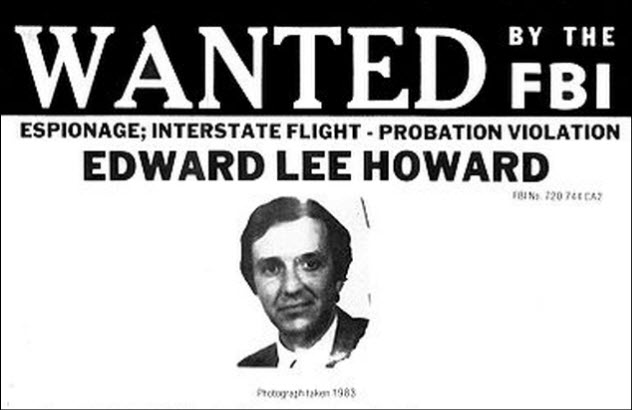
In 1980, Edward Lee Howard was recruited to join the CIA despite his history of petty drug use. The agency was especially interested in his knowledge of multiple languages and his prior top secret security clearance from working with the Agency for International Development. During training, it was noted that he had an aptitude for countersurveillance. His wife, Mary, was also recruited into the CIA in 1981.
Eventually, he and his wife were invited to apply to the prestigious Soviet European division. But Edward failed a routine polygraph test, with the results suggesting that he had deceived the agency about his past drug use and a possible history of petty theft.
As the couple was preparing to depart for Moscow, the CIA fired Edward. Furious, he made drunken phone calls to the American embassy in Moscow on a line that he knew to be monitored by the Soviets. It was an act of revenge that deliberately exposed the supervisor there as a CIA agent.
The Howards moved to New Mexico, where Edward continued drinking heavily. His troubles became worse when he was fingered as a Soviet informant (code-named “Robert”) by ex-KGB defector Vitaly Yurchenko. Edward was implicated in the exposure and execution of Soviet stealth technology researcher Adolf Tolkachev, a CIA asset.
The FBI began to investigate Edward, but he was trained in dealing with surveillance and proved a difficult target. He told a member of the surveillance team that he was ready to talk if he had a lawyer. Then he had a final dinner with his wife before fleeing into the desert.
To fool their FBI tail, his wife drove home with a fully dressed and wigged dummy sitting in the front seat. She bought more time by playing a prerecorded tape of her husband on their phone to fool the wiretap.
In reality, Edward was already in New York boarding a flight to Helsinki, after which he defected to the Soviet Union. He was given an apartment in Moscow and a dacha in the upscale Zhukovka area. But in 2002, Edward died mysteriously of a broken back in his dacha. RIA Novosti, the Russian state news organization, denied that version of his death but gave no further details.
9 Annabelle Bucar
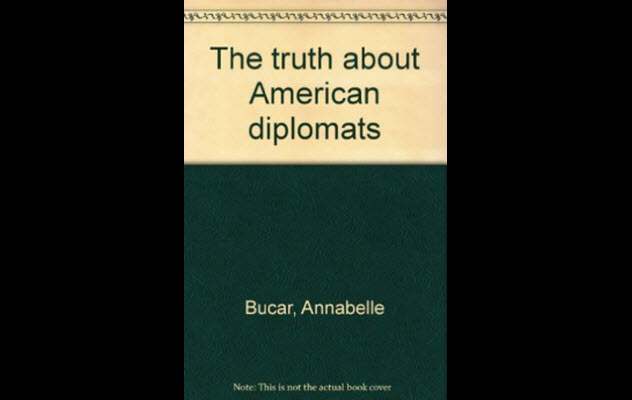
Born to a Pennsylvania mining family of Croatian origin, Annabelle Bucar was described as having an affinity for Slavs. She became an attache and information clerk for the American embassy in Moscow and worked under Ambassador Walter Bedell Smith in the late 1940s.
The KGB spotted her having an affair with a local actor and playboy named Konstantin Lapshin. The KGB persuaded Lapshin to continue the affair to compel Bucar to defect. In exchange, the KGB would boost his theater career.
Lapshin was working for the NKVD and was described by Bedell Smith as having “courted almost every unattached young foreign woman in Moscow.” Despite this, Lapshin proposed a secret marriage to Bucar that would be sponsored by his uncle. Bucar accepted and announced in an open letter that she was staying in the Soviet Union to marry Lapshin.
Later, she wrote a book, The Truth About American Diplomats, in which she characterized the US embassy as a “vast espionage net” filled with incompetent and immoral officials. However, she wouldn’t have had access to much of the information she released, so her statements were said to have been fabricated. Afterward, Bucar worked for Radio Moscow as an announcer until her death in 1998.
The Bucar affair may have influenced the production of the 1960 play American Girl by Alexander Orlov, an NKVD defector before World War II. The play told the story of a young woman working at the American embassy who was seduced by a singer at the Bolshoi Theater in a secret NKVD operation. One of the NKVD characters was named Nikolai Ivanov, and one of the real NKVD supervisors of the Bucar operation was Corporal Boris Ivanov. No explanation for the extremely close parallels was ever given by Orlov.
8 Flora Wovschin
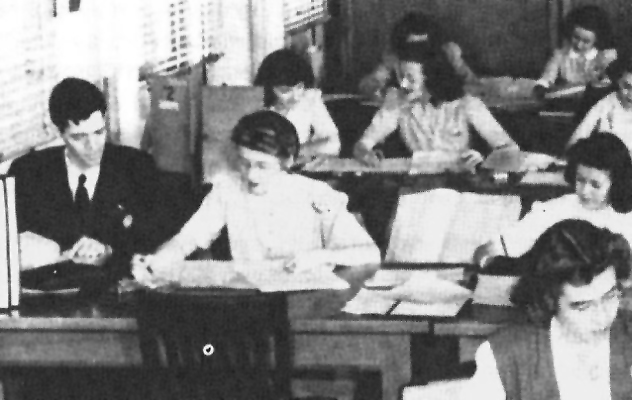
Born of White Russian immigrants to the US, Flora Wovschin joined the Young Communist League while studying at Barnard College in New York. There, she first came in contact with future Soviet spy Judy Coplon. Later, Wovschin worked at the Office of War Information, where she may have been recruited by Coplon to work for the KGB. After her transfer to the State Department, Wovschin resigned in 1947 to marry a Soviet Amtorg engineer. Eventually, they moved to Moscow.
But the FBI didn’t begin to investigate Wovschin until 1949, when the Venona program to decrypt Soviet communications raised suspicion about her espionage activities. By that time, though, it was far too late.
According to information recovered through Venona, Wovschin used the code name “Zora” while working under English-born KGB spy Vladimir Pravdin, known as “Sergei.” She had a network of contacts and informants in the State Department, Harvard University, and the Office of Strategic Services. Some of them were never identified.
According to testimony from her mother and stepfather (who also worked for the KGB), Wovschin was divorced and unhappy in the Soviet Union in 1949. In a letter to her mother, Wovschin said that she was going to the home of “blind old Minkie’s parents,” which was an oblique reference to the family’s aged Chinese poodle. It is believed that Wovschin was working with the North Koreans in an intelligence or anti-American propaganda role during the Korean War and died soon afterward.
7 Jeff Carney
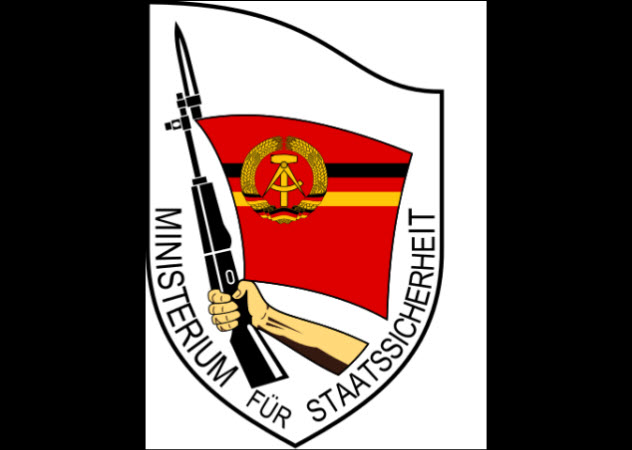
Hired by the US Air Force for his language skills, Jeff Carney listened to East German communications and translated important information for military intelligence. However, he became depressed due to family problems and was dissatisfied with the military’s official ban on gays.
In April 1983, he crossed Checkpoint Charlie with the intention of living a new life in East Germany. But he was taken to a small room by East German border guards and compelled by intelligence operatives to become a spy for the Stasi.
Using the code name “Uwe” or “Kid,” Carney smuggled classified documents in his boots and pants to give to his handler “Ralph” or leave in a drop box near a tree in the forest in Eiskeller in northwest Berlin. He was even given a camera hidden inside a Lipton iced tea can to photograph military documents. Although he was only paid 300 deutsche marks for his deliveries, the East Germans also supplied him with high-quality steroids for his hobby of long-distance bike riding.
According to Carney, his influence may have helped to prevent a nuclear war. His supervisor had told him of an operation to bring US fighters within triggering range of Russian radar to gather intelligence on their emergency procedures. Fearing that the Russians would mistake the operation for an attack and launch a counteroffensive, Carney informed the Stasi of the nature of the operation.
In 1984, Carney was told that his Berlin posting was ending and that he would be sent to Texas. For a while, he continued his spying activities in the US, meeting his handlers in Mexico and Brazil. However, after his American superiors began to question his mental health and took his access rights away, Carney requested asylum at the East German embassy in Mexico.
He was taken to East Germany, where he was awarded the “Brotherhood in Arms Medal” from Stasi head Erich Mielke. Carney was also given a new name (“Jens Karney”), an East German passport, and a bugged apartment containing only a black-and-white television and the complete works of Lenin.
Initially, he listened to bugged conversations to get information to assist East German agents. After the Berlin Wall came down, he worked as a driver on the Berlin subway. In 1991, he was seized and flown back to the US to stand trial for espionage. He served 12 years in prison.
6 John Discoe Smith
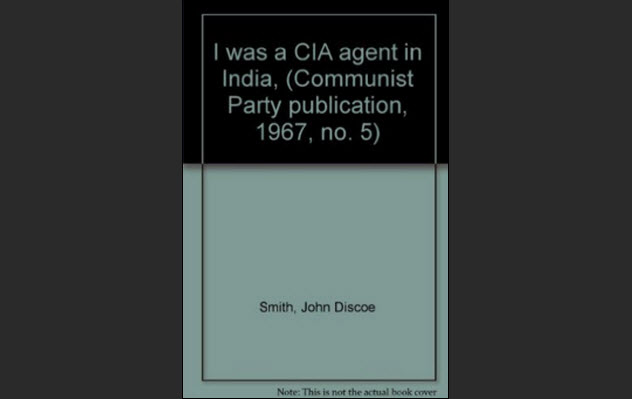
After joining the State Department as a communications clerk in 1950, John Discoe Smith of Massachusetts was allegedly involved with CIA operations while working at the US embassy in India from 1954 to 1959. During this time, he also married a CIA operative based in New Delhi.
He resigned in 1960 and wandered around Europe before defecting to the Soviet Union. While there, he sent a letter to Indian officials detailing CIA activities in the country, which led to the expulsion of the American spymaster Harry Rositzke. Smith also wrote a number of articles for the Soviet newspaper Literaturnaya Gazeta, which became the subject of his 1967 book, I Was a CIA Agent in India.
In the articles and the book, Smith claimed that he had been asked to deliver a package to a Chinese nationalist operative in Hong Kong. Later, he discovered that the package had contained explosives. They were used in the 1955 bombing of an Air India flight which was transporting a Chinese communist government delegation to the Bandung Conference. The attack had apparently been spurred by the CIA’s belief that Chou En-lai would be onboard.
But Chou had made a last-minute change of plans to meet Egyptian president Gamal Abdel Nasser in Rangoon. Although CIA involvement in the botched bombing was never completely proven, the agency was pressured by Washington to refrain from committing such acts against Chou in the future.
While it is known that Smith was employed by the State Department in India during that period, the veracity of his claims has been disputed by some people.
5 Glenn Souther
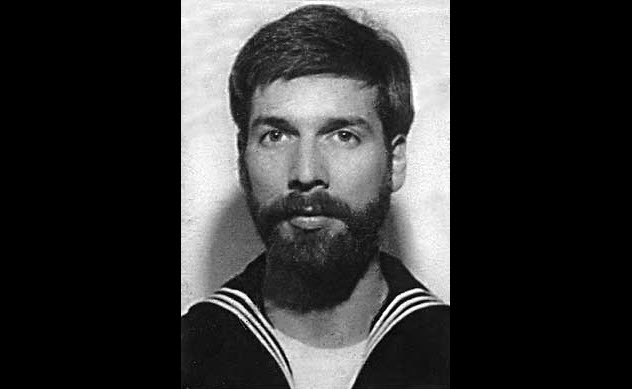
Glenn Souther was a US Navy photographer who defected to the Soviet Union in 1986 for ideological reasons. He had been recruited by Boris Solomatin of the KGB while stationed in Italy in the early 1980s. He later studied Russian literature at Old Dominion University while working as a reservist in naval intelligence.
Souther processed satellite reconnaissance photographs and intercepted classified US Navy communications. In 1986, when the FBI began to suspect that he was working for foreign intelligence, he suddenly vanished.
In 1988, he turned up in the Soviet media, thanking the government for accepting his request for asylum. He had taken the name “Mikhail Yevgenievich Orlov,” received Soviet citizenship and the Order of Friendship of Peoples, and apparently worked for the KGB.
Appearing on the television program Camera on the World, Souther discussed his disillusionment with American nuclear arms policy, intelligence operations, and anti-Soviet propaganda. When asked why he had defected, he replied, “I simply decided to live here or not to live.”
The next year, it was announced that he had committed suicide in his garage at age 32. Intelligence chief Vladimir Kryuchkov said, “It was a tragic thing. He committed suicide. [ . . . ] He was under massive nervous tension because he worked for a long time in difficult conditions.”
In the aftermath, US intelligence revised their estimates of the fallout from Souther’s defection, which they had previously considered unimportant. The revised analysis suggested that Souther had given valuable information to the Soviets, which endangered US satellite surveillance programs.
Fellow students and others who knew him later told of his erratic personality, hard partying, and growing paranoia and resentment regarding his FBI profile as a spy. Classmate Lana Rodriguez said that he had asked her to tutor him in Russian. When he turned up at her door, he introduced himself as a rapist.
“He obviously was crazy, but he was not a rapist,” she said. Regarding his suicide, Rodriguez said the Soviets “probably took away the only thing that made him really special—his crazy free spirit.”
4 Noel Field

Noel Field served as a US State Department official from the late 1920s to 1936. But he was increasingly dissatisfied with the US refusal to join the League of Nations. He became radicalized in 1927 through exposure to the Sacco-Vanzetti case. Two Italian immigrants, Nicola Sacco and Bartolomeo Vanzetti, had been accused of murder on flimsy evidence due to their connection with the anarchist movement.
Field forged links with the American Communist Party in the early 1930s. He also left the State Department in 1936 to work for the League of Nations in Geneva. He was further radicalized by the Spanish civil war and the fascist aggression against the democratically elected government in Spain.
Field moved away from his earlier pacifist idealism and was convinced by FDR’s recognition of the USSR that “the US and the Soviet Union had a common mission to save the world from the abyss into which [the] capitalism and imperialism of the European powers were driving it.”
Field may have started working for Moscow as early as 1934, but his initial role was somewhat muddled. After retiring from the League of Nations, he worked for the Unitarian Service Committee (USC), which provided humanitarian assistance during World War II.
During this time, Allen Dulles from the US Office of Strategic Services used Field to access valuable information from communist sources operating in Nazi-held territory. When the war ended, Field used US government money to help Hungarian communists return to their country. He was later fired from the USC for political reasons. With a web of communist contacts across Europe, he moved into progressive journalism.
Despite his faith in the Marxist-Leninist cause, Field was kidnapped from his hotel room in Prague in 1949. He was held in solitary confinement, apparently due to Stalin’s fear of Titoist communists opposed to the Soviet Union. Field was used to prosecute Stalin’s perceived enemies across the Eastern Bloc, beginning with Hungarian politician Laszlo Rajk.
Biographer Kati Marton explained, “Field was the man who knew them all [and] could tie all of them to the US and the CIA.” In 1956, her parents had interviewed Field in Hungary and were shocked that he had remained loyal to Stalinism despite his suffering. Field still believed that the Soviet troops then marauding across the country killing demonstrators were the true revolutionaries in service to the glory of the workers’ state.
3 Victor Norris Hamilton

Palestinian-born American citizen Victor Norris Hamilton graduated from the American University in Beirut and moved to the US hoping to find an academic position. After failing to find employment, he was working as a doorman when he was recruited as a code breaker for the NSA’s Production Organization.
He married an American woman whom he had met in Libya, changed his name from Hindali to Hamilton, and worked for the NSA cracking codes on communications between Arab countries and the rest of the world. This included communications between the USSR and the Arab world regarding petroleum needs.
After he had a mental breakdown in 1959, he was initially kept on by the NSA because they needed as many Arabic speakers as they could get. However, they finally let him go due to evidence of schizophrenia. In 1962, he defected to the Soviet Union, where he gave an account of his work for the NSA in a press release that was printed in the newspaper Izvestia. His wife, Lillie Hamilton, later assumed that he had died in Russia because she received his last letter in 1974.
However, in 1992, Victor was discovered in a Russian psychiatric prison, Special Hospital No. 5 in Troitskoye, which is southwest of Moscow. The deputy director of the hospital refused to let any male reporters or photographers interview him, as Victor was suffering from delusions that every man was a KGB agent out to get him.
Victor did talk with Susan Mesinai, an official with the Ark Project which sought to locate American POWs and MIAs. According to Mesinai, “He doesn’t know that there’s been a putsch [failed coup]. He doesn’t know there’s greater liberty. He said to me: ‘I am a part of the penal system. Don’t talk to me with this nonsense.’ ”
In an interview with Associated Press reporter Leslie Shepherd, Hamilton said that he was both a prisoner and the hospital’s director-general of intelligence, that the hospital was actually a brothel, that his family was long dead, and that the Pentagon was communicating with him through a television set.
Hospital director Vladimir Voronin explained that Hamilton’s delusions had evolved over time, “He used to walk around with a small radio all the time,” said Voronin. “With the Pentagon talking to him through the television, he’s stopped listening to the radio.”
2 Charles Robert Jenkins And James Joseph Dresnok
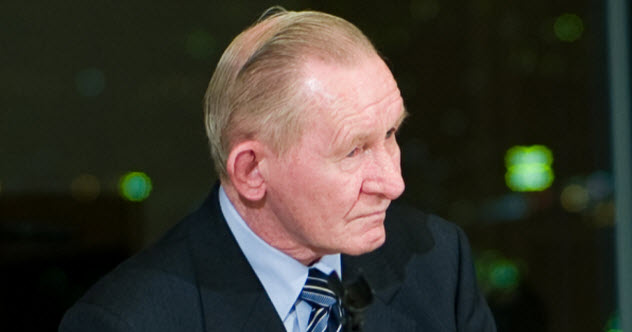
By 1965, Charles Robert Jenkins was a well-respected veteran of the 8th Cavalry. After downing 10 beers, he led his four-man squad near the Korean Demilitarized Zone and then instructed them to halt while he investigated a sound up ahead.
He never returned because he had walked across the border and surrendered to a North Korean border patrolman. Supposedly, he defected because he was afraid of being asked to lead more aggressive patrols and of being sent to fight in Vietnam.
The US military announced that Jenkins had defected. Their conclusion was based on the contents of letters found in his barracks, a claim his family rejected. Three weeks later, North Korean state radio announced that Jenkins had sought a better life in North Korea.
They featured him and three other deserters in a propaganda pamphlet. In the late 1960s, Jenkins made pro-Pyongyang radio broadcasts and even appeared as an American villain in a propaganda film.
During a 2002 visit by Japanese Prime Minister Junichiro Koizumi to North Korea, it was discovered that Jenkins had married Hitomi Soga, a young Japanese nurse who had been kidnapped by the North Koreans in 1978. She returned to Japan, and Jenkins was later convinced by Koizumi to move to Japan with his two daughters. In 2004, Jenkins moved to the Japanese island of Sado, where he lived with his family and became a greeter in a souvenir shop.
In 1962, James Joseph Dresnok was another prominent American military defector to North Korea. He told The Guardian, “I was forced to clean an armored truck with a toothbrush and bucket of water. It was 42 below zero. That’s when I first thought of crossing to a communist country.” He made his move after his wife left him for another man.
Captured by North Korean soldiers and taken to Pyongyang, Dresnok eventually grew to love his new homeland and even went on to praise the Kim family leadership. In North Korea, he married twice and now has three sons.
He has said: “I don’t consider myself a traitor. I love my country. [ . . . ] Kim Il Sung wrote, ‘Those who really love their country and their home can become communists.’ I’m not a communist, but I would like to be one.”
Dresnok supposedly has a Twitter account where he posts pro-Pyongyang propaganda and comments on his daily life, but its veracity has been doubted by analysts.
1 William Hamilton Martin And Bernon Mitchell
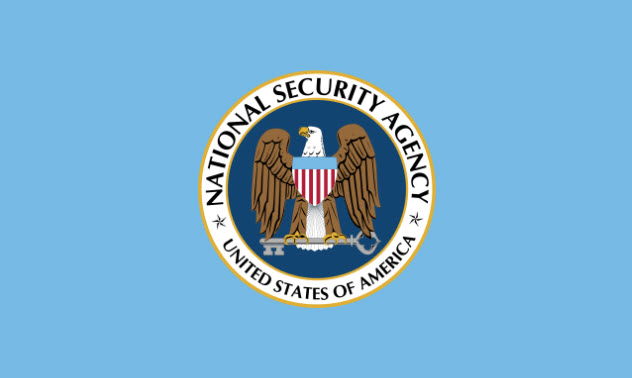
After becoming friends while working on cryptography at Yokosuka Naval Base in Japan, William Hamilton Martin and Bernon Mitchell were approached by the NSA to work as GS-7 mathematicians in the Office of Research and Development.
Soon afterward, they are believed to have joined the American Communist Party and offered their assistance to a KGB officer at the Soviet embassy in Mexico. They had access to the NSA network of supercomputers as well as listening posts that gathered intelligence from allied and enemy nations alike.
Although the Soviets wanted them to remain in their NSA positions, the pair defected to the Soviet Union in 1960. In a press conference in Moscow, Martin explained that they had defected because the US government violated other countries’ airspace, intercepted classified communications from allied nations, and recruited secret agents from allied nations.
After the press conference, Representative Francis Walter, chair of the House Un-American Activities Committee, called Martin and Mitchell “sexual deviates,” which was code for homosexuals. The NSA used this as an opportunity to claim that Martin and Mitchell had defected because they were homosexuals looking for a place that would accept them socially. The NSA even claimed that Mitchell had admitted to sexual experimentation with chickens and dogs.
The association between political subversion and homosexuality led the NSA to initiate a purge and new security screening procedures. Meanwhile, the media ran wild stories of a secret ring of gay communists that were government employees. However, the NSA and the Soviets soon realized that neither Mitchell nor Martin had any valuable intelligence to share.
Neither man was gay, either, a conclusion the NSA reached a year later after interviewing 450 people who knew the pair. Both men married Soviet women and went on to work and study in Leningrad. But they soon regretted their decision to defect.
They approached Americans to see if they could return to the US without being charged with a crime, but the federal authorities rebuffed them. Both men turned to alcohol. Mitchell died in Russia four decades later. Martin was later described as “totally on the skids, an incurable alcoholic, and surrounded by degenerates, and devoted to the practice of sexual perversions.”
Martin sneaked into Mexico in 1987 on an Australian passport and died there, although he was ultimately buried in the US.
David Tormsen is planning to defect to a country with Universal Basic Income, if they have a nice flag. Email him at [email protected].



